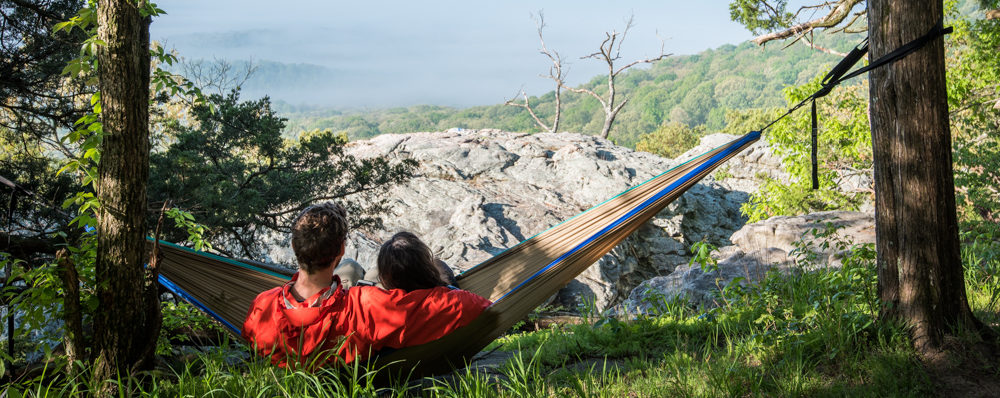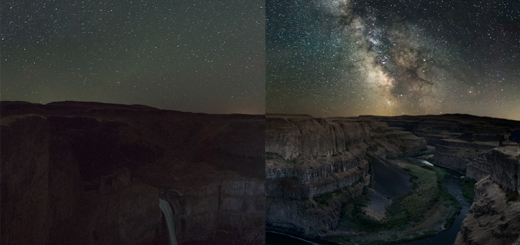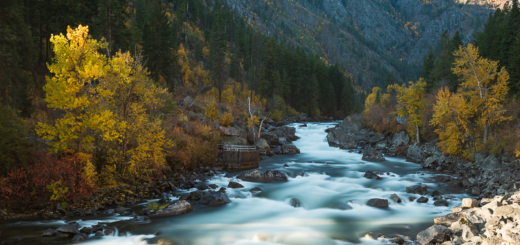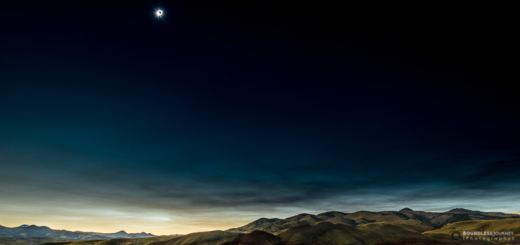Hiking with Photography Gear
Photography and the outdoors go hand in hand, so it’s no mystery why lots of photographers are also hikers. It can be a challenge to enjoyably go hiking with photography gear on long hauls, trust me, I’ve made quite a few mistakes. That being said, over the past couple years I’ve improved my setup and made it a much better experience. Here is some of my most commonly used gear for shooting landscapes and what I lug out into the wilderness.
tl;dr
- Have your gear accessible. If it isn’t easy to get to, you won’t use it
- Leave the telephoto lens at home if shooting wildlife isn’t your goal
- Get a comfortable backpack you can wear for hours
- Use a tripod
Backpack – Use a backpack that makes it easy to stop and get to your photography gear
Imagine you’ve already hiked 10 miles and 3000 ft elevation and still have another mile before hitting camp. You’re beaten and ready for food, and all of a sudden the most amazing light is bursting through the dramatic clouds and hitting the craggy mountains in front of you. If your gear is buried in your back and difficult to get to you probably won’t make the effort, and if you do, the light has already faded by the time you get set up. Do yourself a favor and use a pack that makes it easy on you.
I mostly shoot landscapes, so there is usually hiking involved, sometimes for multiple days at a time. Because of that, a good backpack is really important to me. It has to be comfortable while fully loaded, fit all my photography gear and allow for easy access while protecting it, and also hold enough for an overnight trip. I use the F-stop Gear TIlopa 50L pack. It’s a traditional hiking backpack designed specifically for cameras. They make interchangeable and fully configurable camera units that you can easily slide into the pack to carry more or less photography gear. They call these Internal Camera Units (ICU). I’ve flown with this bag a few times and was able to take it as carry on, but if you did have to check it, you can quickly and easily pull out the ICU and take that as carry on so you don’t have to check your photography gear and risk it getting damaged. The only issue I have with this bag is that it’s not big enough for longer backpacking trips. When out for more than 2 days I take my Deuter 75 L beast of a bag so that I can pack enough food and put the ICU in it. Someday I’ll probably get a larger F-stop bag.

F-stop Tilopa back in action
Camera
My baby is the Nikon D750. It’s my first full frame camera and I love the thing. One of the main reasons I went with it is because of it’s phenomenal low light performance that doesn’t produce too much noise, which is key for astrophotography. It’s also very nice having a tilting LCD…until recently not many pro level cameras had this. If your main goal is to keep weight to a minimum, the Olympus OM-D series is a great option. I used the Olympus OM-D E-M5 before switching to Nikon and loved the thing. It’s feather light, weather sealed and takes great pictures. I still use it as a second camera sometimes (when Angelina isn’t using it).
Tripod
I when I first got into photography I didn’t think a tripod was necessary. Now I find myself using a tripod for most shots. It’s more weight to carry, but the benefit in sharpness is well worth it, not to mention that any long exposure is impossible without one. I use a Sirui 52″ tripod which is compact and works well for backpacking but leaves a little to be desired when using a heavy setup. It’s my fault though, I’m pushing the limits by using a Nikon D750 and super telephoto with it.

Gotta have stable legs
Landscape
My lens choice really varies depending on what I’m focusing on in the scene. The easiest choice is to grab the Nikon 16-35mm and capture the entire landscape. This is my most used lens because it is so versatile and tack sharp, but I’ve been trying to branch away from it and use longer lenses for landscapes as a challenge. When I’m going for a more intimate shot of a scene, I’ll reach for a little longer lens like my 50mm or 100mm.

Nikon D750, Nikon 16-35mm at 24mm, f/4, ISO 800, 20 sec
Filters for Landscape
A lot of filters are unnecessary and the effect can be achieved in post. That being said, there are a few filters that I use most times that I shoot landscapes. The first is a circular polarizer. The effect of this filter can’t be reproduced in editing, making it an important one to use. It works wonders when dealing with any sort of reflections, whether it be on glass, water, or leaves of a tree. It can remove reflections and produce a deeper and more vibrant color in foliage and the sky. I use a Formatt Hitech Firecrest superslim filter which works great. I suggest getting filters with a diameter at least the size of the lens you want to put it on, then just use step down rings to adapt it to fit smaller lenses. This is waaaayy cheaper than buying a filter for each lens you own. The second filter is a neutral density (ND) filter. I use the Lee Big Stopper 10-stop filter.
From time to time I’ll also use a graduated ND. These work great for scenes with a flat horizon where the sky is blown out, like when shooting the ocean. Pop on the ND grad to cut down on the sky and get an even exposure! You can achieve the same results by taking multiple images and edit them together, but I’d rather get it right in camera and not have to spend the time editing. They really come in handy when shooting timelapses because doing an HDR timelapse would take an insane amount of time to edit.
The ND and ND grad filters that I use are square filters which require a special filter holder, which has pros and cons. I use a Cokin filter holder that works really well.

Cokin filter holder with the LEE big stopper
Pros
- It’s quick & easy to swap out filter since they aren’t threaded
- Can stack multiple filters easily
- Adaptable to different lenses using a step up ring
- Necessary when shooting with 10 stop filter
Cons
- Have to carry the filter holder
- The filter holders are expensive
- Takes extra time to set up the shot
Astro
I switch between two lenses depending on what I’m trying to achieve. If I want the wide field of view I’ll slap on the Rokinon 14mm f/2.8. If I’m doing a panorama or want a tighter shot than 14mm I’ll use the Nikon 16-35mm f/4. The Rokinon is a cheap, but very good lens for astro, as well as landscape if you enjoy ultrawides. It’s manual focus, which doesn’t matter for these two areas, but for something like sports it wouldn’t work very well. The fact that it is f/2.8 is the key… The faster the lens the better for night photography. I’ve done a few panoramas using this lens, but it can be tricky to make work with the amount of distortion that a 14mm produces.

Nikon D750, Nikon 16-35mm f/4 at 16mm, f/4, ISO 6400, 30 sec
That being said, I find myself reaching for my 16-35mm the most for nightscapes. I dislike that it is only f/4, but I love the versatility of the focal range and using it for panoramas. There are ways to combat the slow aperture, like shooting at high ISO and stacking multiple frames to get rid of the noise (Stay tuned for a tutorial). This lens produces a more natural look where far-off mountains don’t look as tiny as they do with the 14mm.
Wildlife
This is when gear can get really expensive if you want the best of the best, where you can easily spend over 10k on a lens. Unless you’re a full-time wildlife photographer or a rich dentist with money to burn, you won’t be getting one of these. If you’re willing to sacrifice a little quality and a stop or two of light for savings that could buy a car, then there are good options. There has never been a time while shooting wildlife that I’ve said, “man, this bear is way too close, I wish I had a wider lens”. That’ll never happen, but the opposite is always true. I shoot with the Tamron 150-600mm f/5-6.3 and it has served me well. There is now a 2nd version of this lens that I would recommend going with. This thing weighs 4.3 lbs and I do handhold shoot with it when shooting things like birds in flight or running elk, but it gets tiring. For slow subjects, I put it on a tripod to save myself the workout and to get sharper images. I have a habit of overpacking when it comes to photography gear because I want to be prepared…multiple times I’ve carried this on multi-day backpack trips without ever using it, so I was just lugging around extra weight. Think twice about if it’ll actually be useful before packing it.
Portrait
I rarely take portraits, but when I do I reach for my Nikon 50mm f/1.8. It’s a nice focal length that isn’t too wide for portraits, and most importantly it’s a fast lens! Using f/1.8-f2.8 is magical for portraits because the background is buttery smooth.

Beautiful!
Miscellaneous
Remote – A remote is invaluable when trying to get sharp images. Even if your camera is on a tripod and you manually press the shutter button, your camera will vibrate. A shutter release solves this. The remote I use, a Satechi, can also be used wirelessly, which is great for getting selfies and group photos.
Rain cover – My camera is weather sealed and I’ve carried it fully exposed during moderate rain with no problems. But, if I’m in one spot on a tripod in the rain I’ll put a coat on it, because why not? Better safe than sorry. Here’s the shutter release by Satechi that I use.
Lens wipes – Always have this with you! Raindrops, fingerprints, and dust are the worst of enemies for lenses. I use microfiber cloths for a quick cleaning and pre-moistened wipes when a little more cleaning is needed.
I hope that if you’ve read this far, you’ve found some helpful tips and suggestions. Let me know if you have any specific questions on how I carry my camera or camping gear, and please let me know if you have tips!







Hi Nick – Just discovered your website after searching for trip reports of Mt St Helen’s on WTA. Your photography is inspiring! Thanks for sharing all your photos and your helpful information. I, too, enjoy hiking/backpacking with photography in mind.
Hi Laurie, I really appreciate that, thank you! 🙂 I have some editing tutorials on the blog as well if you’re interested in that. Let’s connect on instagram @boundless.journey.photography